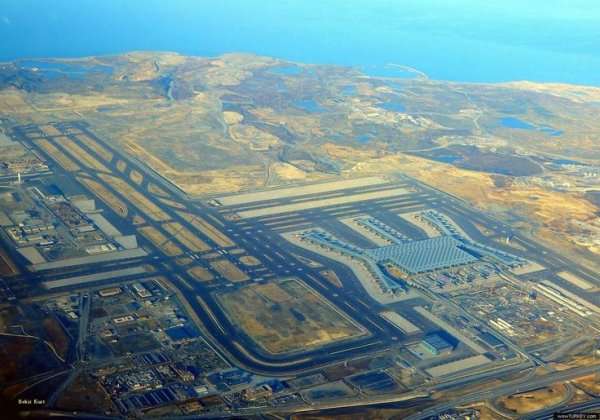Istanbul vs. Atlanta: A Mega-Airport Comparison in the Era of Triple Parallel Runway Operations
As Istanbul Airport (IST) achieved a major milestone with the activation of triple parallel runway operations, it joined the ranks of only a few airports in the world with such advanced air traffic management capabilities. Among these elite hubs is Hartsfield-Jackson Atlanta International Airport (ATL)—consistently ranked as the busiest airport in the world.
This article explores how these two global aviation powerhouses compare in terms of passenger capacity, air traffic management, strategic importance, and operational infrastructure.


1. Airport Capacity and Infrastructure
Both airports are mega-hubs, but their core focus and capacity plans differ.
| Feature | Istanbul Airport (IST) | Atlanta Airport (ATL) |
|---|---|---|
| Design Capacity | 200 million passengers (future plan) | ~107 million passengers (2023 actual) |
| Current Passenger Volume | ~76 million (2023) | ~107 million (2023) |
| Aircraft Movements (2023) | ~500,000 | ~724,000 |
| Runways | 5 parallel | 5 parallel |
| Triple Parallel Ops | ✅ Enabled | ✅ Enabled |
Both ATL and IST are capable of triple independent parallel runway operations, a critical feature that enables high-volume simultaneous landings and departures, significantly improving efficiency and throughput.
2. Strategic Location and Connectivity
Geography plays a huge role in each airport’s connectivity and influence.
| Factor | Istanbul Airport (IST) | Atlanta Airport (ATL) |
|---|---|---|
| Location | Crossroads of Europe, Asia & Africa | Southeastern U.S. |
| Transfer Role | Major global connector | Primarily domestic with international extensions |
| Time Zone Advantage | Ideal for East-West transfers | Efficient for North & South America |
| Global Function | Intercontinental transfer hub | U.S. domestic and American region hub |
IST excels as a global connector, especially for flights bridging Europe, Asia, and the Middle East. ATL, while less prominent for intercontinental transfers, is the backbone of domestic U.S. connectivity and a vital link to Latin America.
3. Air Traffic Management (ATM) Systems
The backbone of any airport’s efficiency is its ATM capabilities.
| Feature | IST | ATL |
|---|---|---|
| Runway Operations | Triple independent parallel | Triple independent parallel |
| ATM Technologies | A-SMGCS, multilateration | FAA NextGen systems, advanced sequencing |
| Complexity of Operations | High (international mix, modern systems) | Very high (volume intensity, fast turnaround) |
| Efficiency Focus | New-gen design, rapid growth | Legacy infrastructure, perfected flow management |
ATL’s ATM systems are optimized for nonstop volume, while IST uses state-of-the-art infrastructure to manage a complex, international flight mix.
4. Role in Global Aviation
Both airports are vital to their regions and to the world.
| Indicator | IST | ATL |
|---|---|---|
| World Passenger Rank | Top 10 (rising fast) | #1 (2023) |
| Main Hub Carrier | Turkish Airlines | Delta Air Lines |
| Transfer Focus | Long-haul, multi-continent | Primarily short- to medium-haul |
| Infrastructure Age | Opened 2019 | Over 40 years of upgrades |
Istanbul Airport is a future-facing aviation hub, while Atlanta remains a masterclass in high-volume efficiency and domestic connectivity.
Summary Comparison Table
| Category | IST | ATL |
|---|---|---|
| Triple Parallel Ops | ✅ | ✅ |
| Long-Term Capacity | 200M | Capped by land limits |
| Runway Count | 5 parallel | 5 parallel |
| Hub Airline | Turkish Airlines | Delta Air Lines |
| Main Focus | Global interconnectivity | Domestic dominance |
| Geographic Strength | East-West axis | North-South axis |
Final Thoughts
The aviation world is watching as Istanbul Airport emerges as a dominant global gateway, offering cutting-edge infrastructure and strategic location advantages. Meanwhile, Atlanta Airport continues to prove its legacy by handling more passengers than any other airport on Earth—thanks to unmatched operational efficiency and domestic reach.
With both airports now capable of triple parallel runway operations, the skies are set for a new era of high-efficiency aviation that pushes the boundaries of air traffic management and global connectivity.


